Crankshaft Bearing Installation Procedure
- Clean the upper and lower crankcase crank bore with a lint-free cloth.
- Clean all the oil from the backside of new bearing halves.
- Install new upper crankshaft bearings into position. The thrust bearing (1) belongs in the number three journal (2). Ensure that the upper bearing insert contains the oil transfer hole and groove. Roll the bearing into position so that the lock tang engages the crank slot. The bearing must fit flush with the upper crankcase.
- Install new lower crankshaft bearings into position in the lower crankcase. The lower crankcase crankshaft bearings are identified by NO grooves or holes. The bearings must fit flush with the lower crankcase.
- Apply a liberal amount of crankshaft prelube GM P/N 1052367 or clean engine oil GM P/N 12345501 to the upper and lower bearing surfaces.
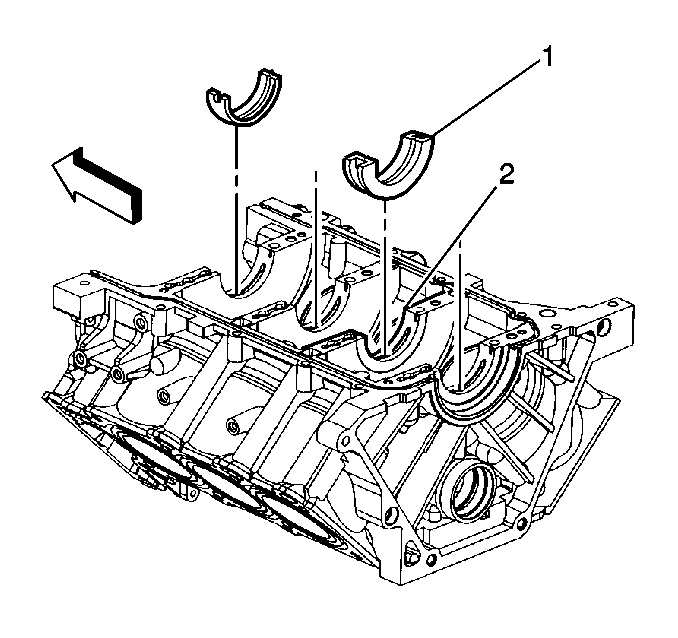
Important: If the crankshaft bearings have been used in a running engine, you must replace them with NEW crankshaft bearings for reassembly.
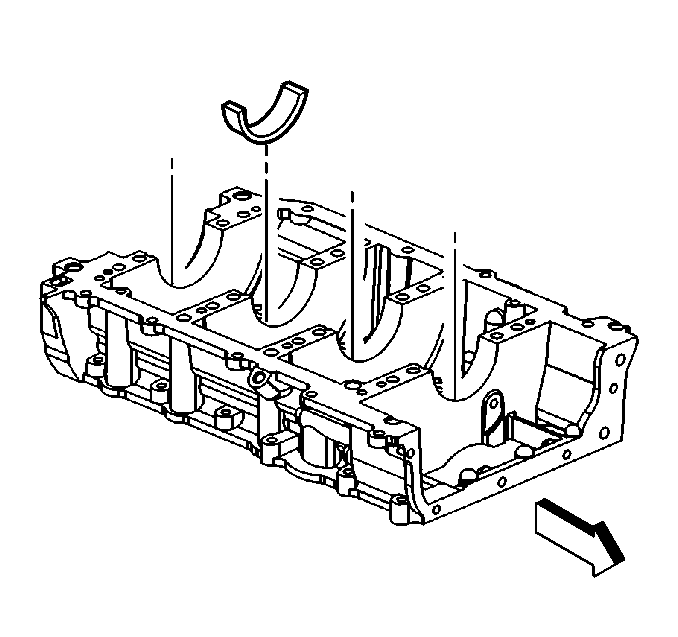
Crankshaft Installation Procedure
- Install the crankshaft sprocket drive pin (1). If necessary, lightly tap the pin in place with a small hammer until it bottoms on the crankshaft.
- Gently lower the crankshaft into position in the cylinder block.
- Ensure that the crankshaft turns without binding or noise.
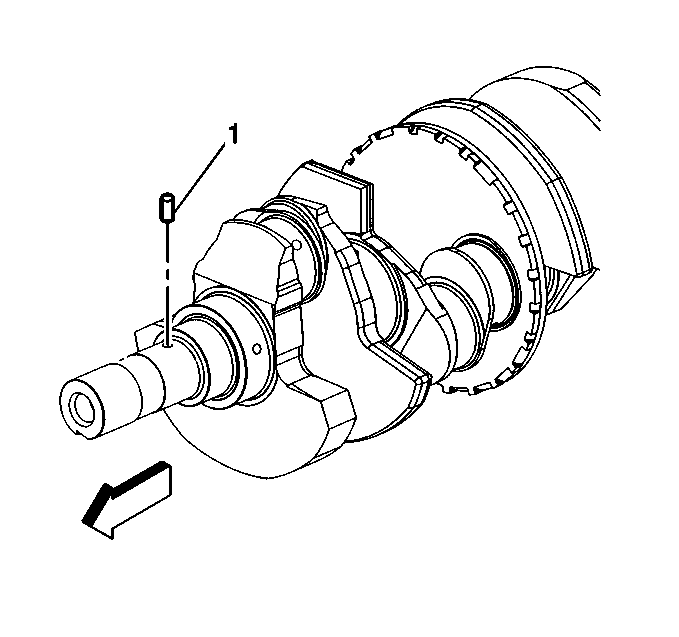

Crankshaft Bearing Clearance Measurement Procedure
Tools Required
J 36660-A Torque Angle Meter
- Place a length of fresh, room temperature plastic gaging material all the way across all the crankshaft bearing journals.
- Place the crankshaft oil scraper (2) in position on the lower crankcase. Align the holes with the main bearing bolt holes.
- Place into position the main bearing bolts. The single stud-head bolt (1) is used for oil pump pick-up mounting.
- Align the lower crankcase with the dowel pins in the upper crankcase.
- Install the lower crankcase onto the upper crankcase slowly until feeling a positive stop.
- Inspect the upper-to-lower crankcase joint to ensure that the lower crankcase is fully seated on the cylinder block.
- Loosely install the nine lower crankcase perimeter bolts.
- Tighten the lower crankcase bolts (1 through 16) in proper sequence.
- Tighten the lower crankcase bolts in sequence to 20 N·m (15 lb ft).
- Tighten the lower crankcase bolts in sequence an additional 70 degrees using the J 36660-A .
- Tighten the lower crankcase perimeter bolts (1 through 9) in proper sequence.
- After reaching final torque, allow the assembly to sit for two minutes.
- Remove the lower crankcase bolts.
- Remove the lower crankcase.
- Determine the crankshaft bearing clearance by comparing the width of the flattened plastic gaging material at its widest point with the graduation on the gaging material container.
- Compare your measurements with the Engine Mechanical Specifications . If the new bearings do not provide the proper crankshaft to bearing clearance, re-measure the crankshaft journals for the correct specified size and ensure that you have the correct new bearings. If the crankshaft journals are incorrectly sized, replace the crankshaft. No crankshaft machining is permitted and undersized bearings are not available.
- Clean the plastic gaging material from the crankshaft bearing journals with a soft, lint-free cloth.
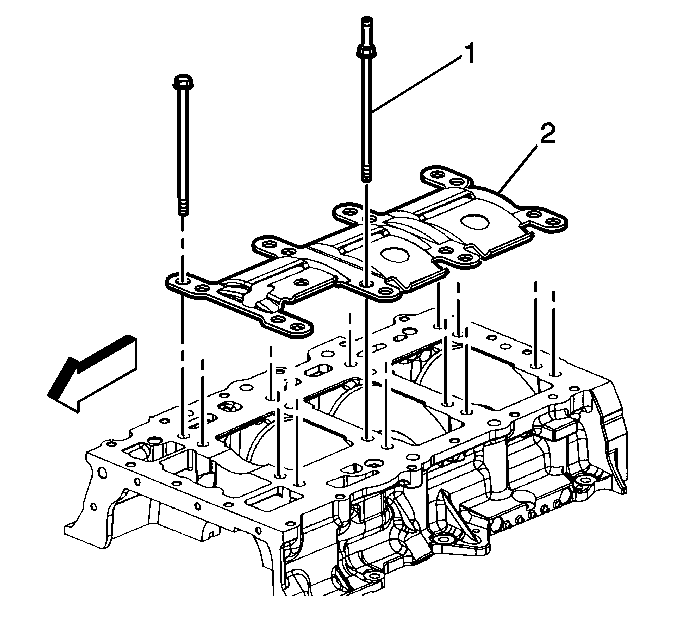
Important: The crankshaft oil scraper is stamped with an arrow for the front of engine.
Important: The crankshaft oil scraper is stamped for the location of the single stud-head bolt.
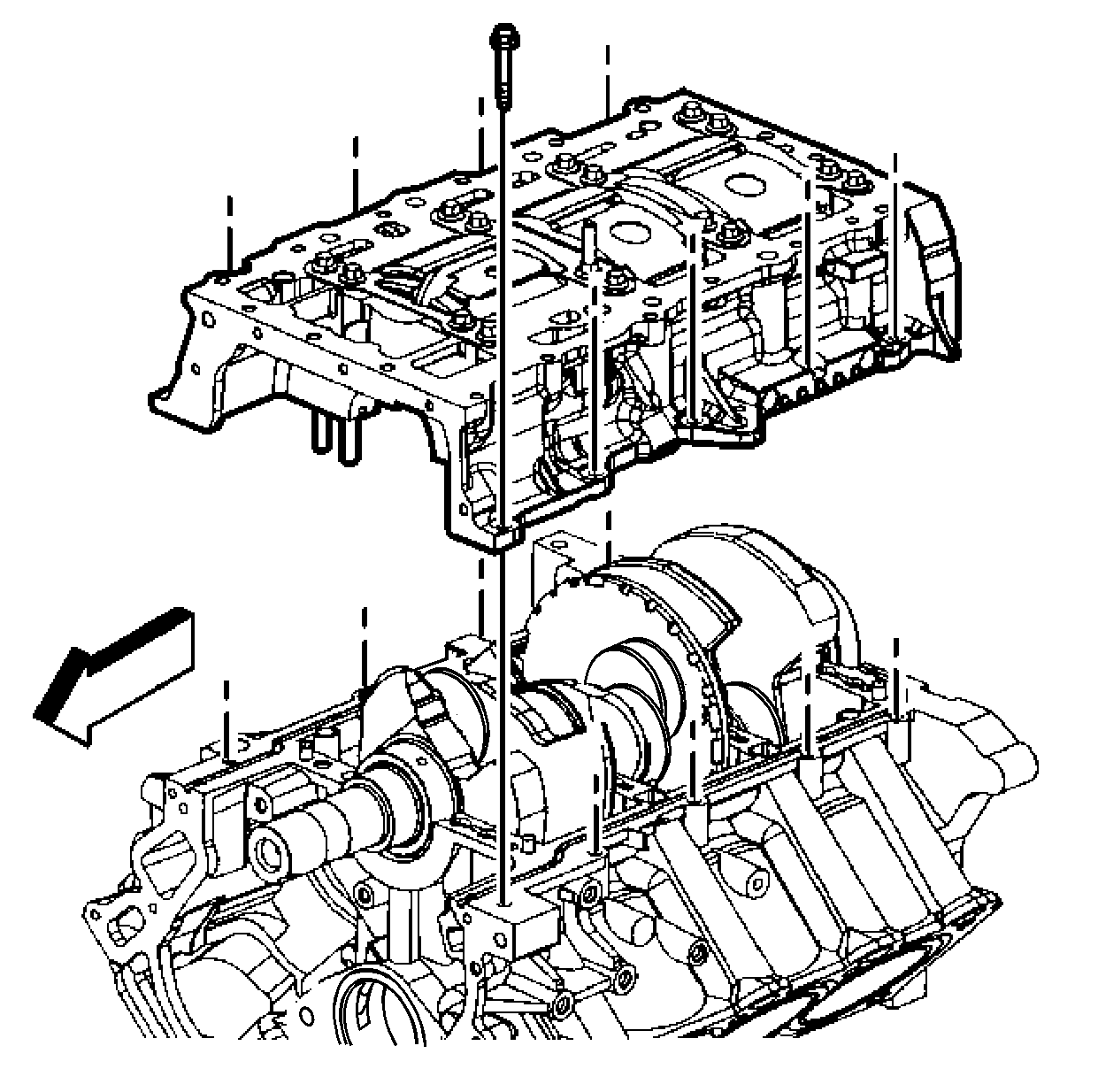
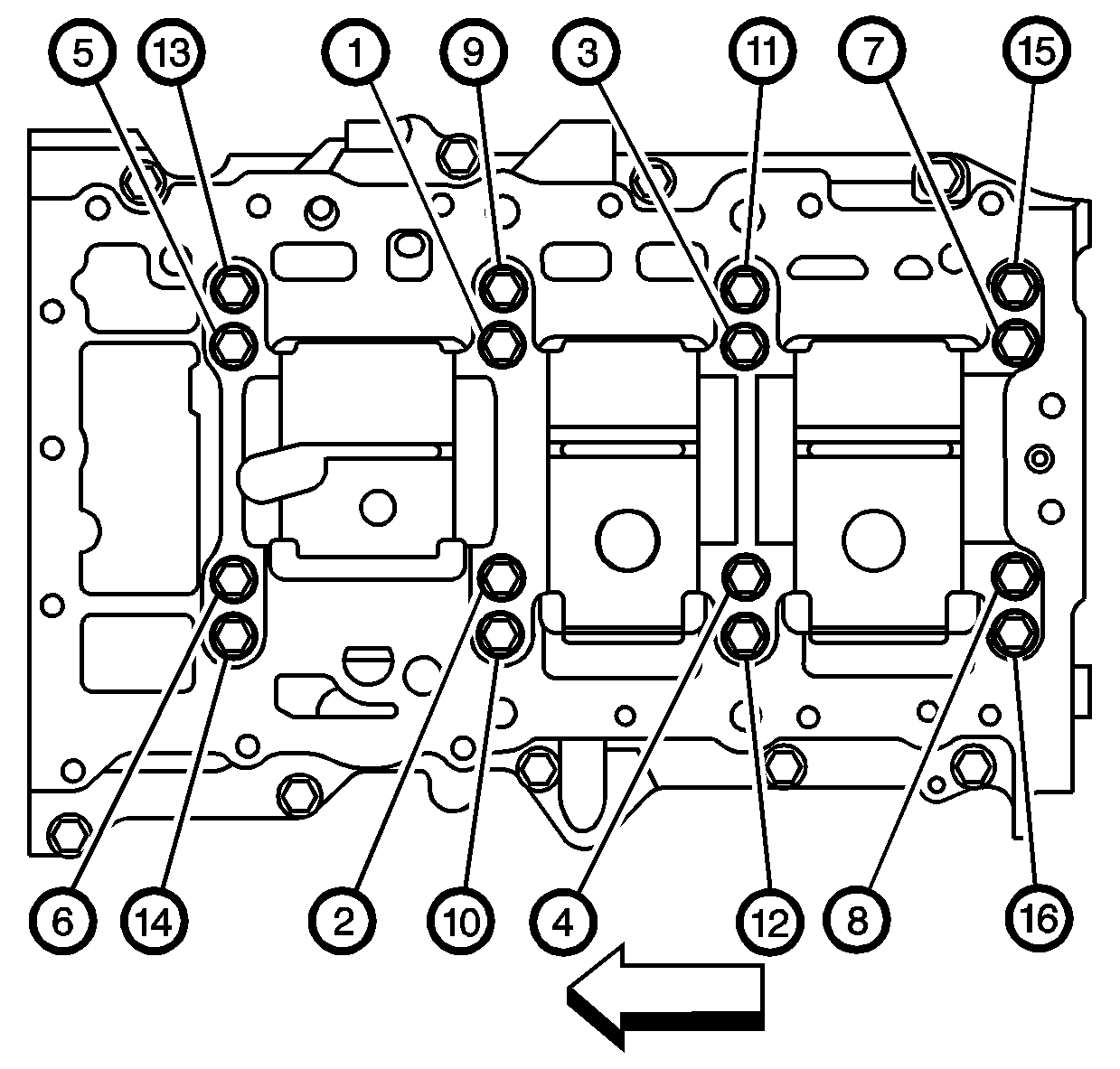
Notice: Use the correct fastener in the correct location. Replacement fasteners must be the correct part number for that application. Fasteners requiring replacement or fasteners requiring the use of thread locking compound or sealant are identified in the service procedure. Do not use paints, lubricants, or corrosion inhibitors on fasteners or fastener joint surfaces unless specified. These coatings affect fastener torque and joint clamping force and may damage the fastener. Use the correct tightening sequence and specifications when installing fasteners in order to avoid damage to parts and systems.
Tighten
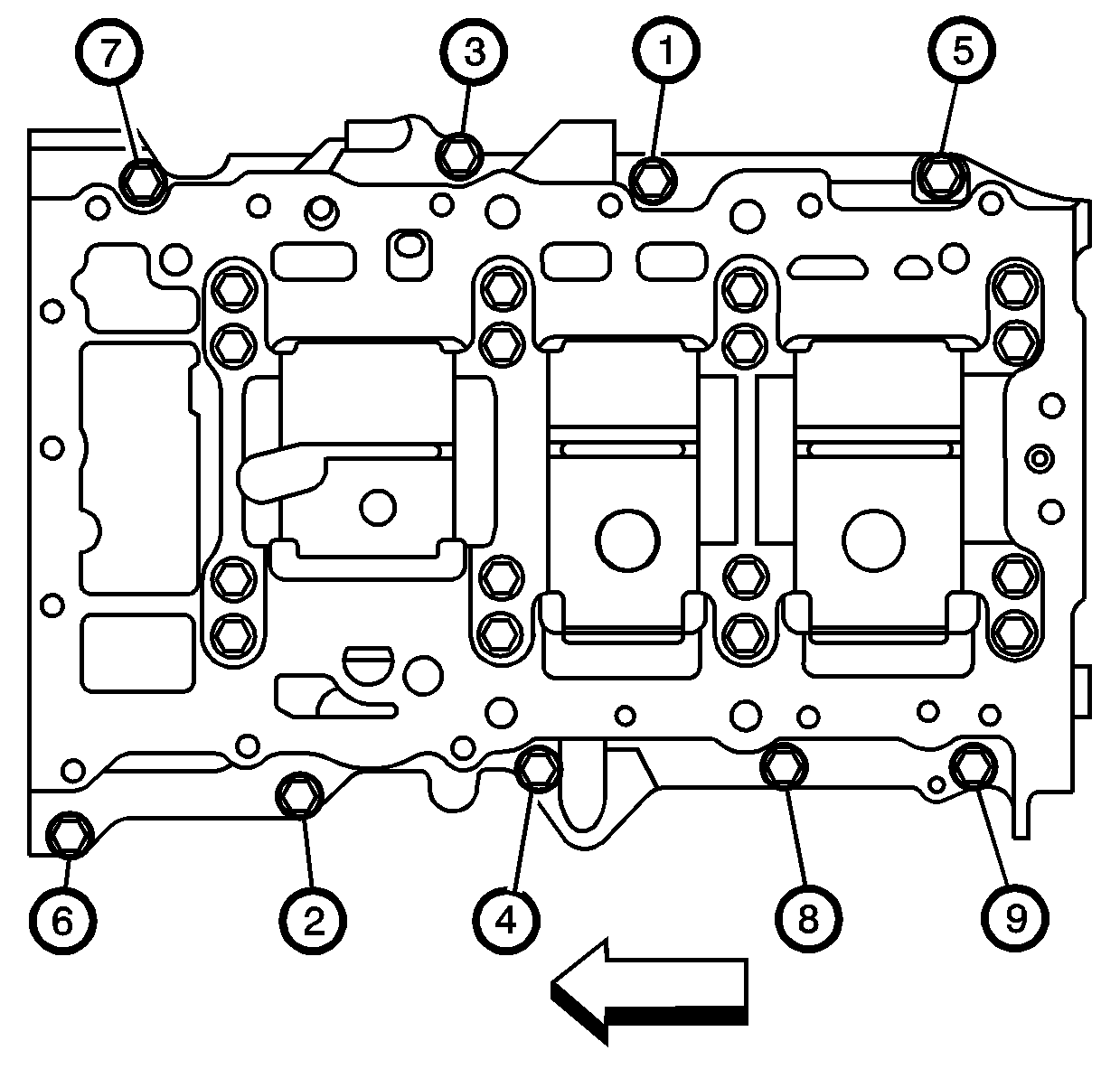
Tighten
Tighten the lower crankcase perimeter bolts in sequence to 30 N·m
(22 lb ft).

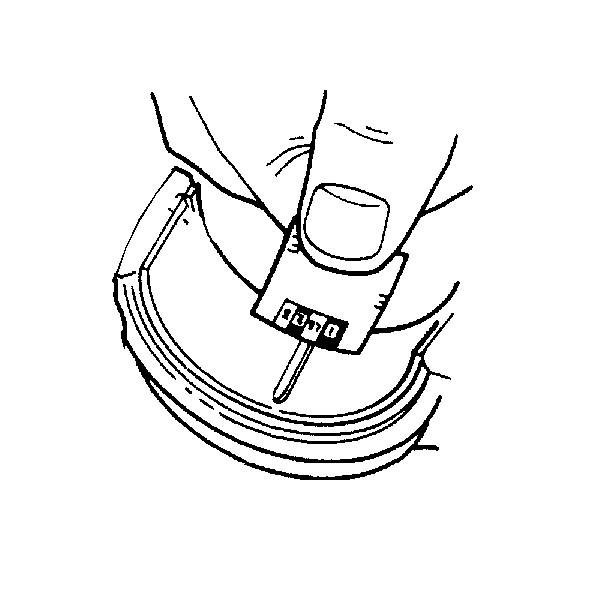
Important: The crankshaft bearings CAN be reused after checking the clearance if the bearings have never been used in a running engine.
